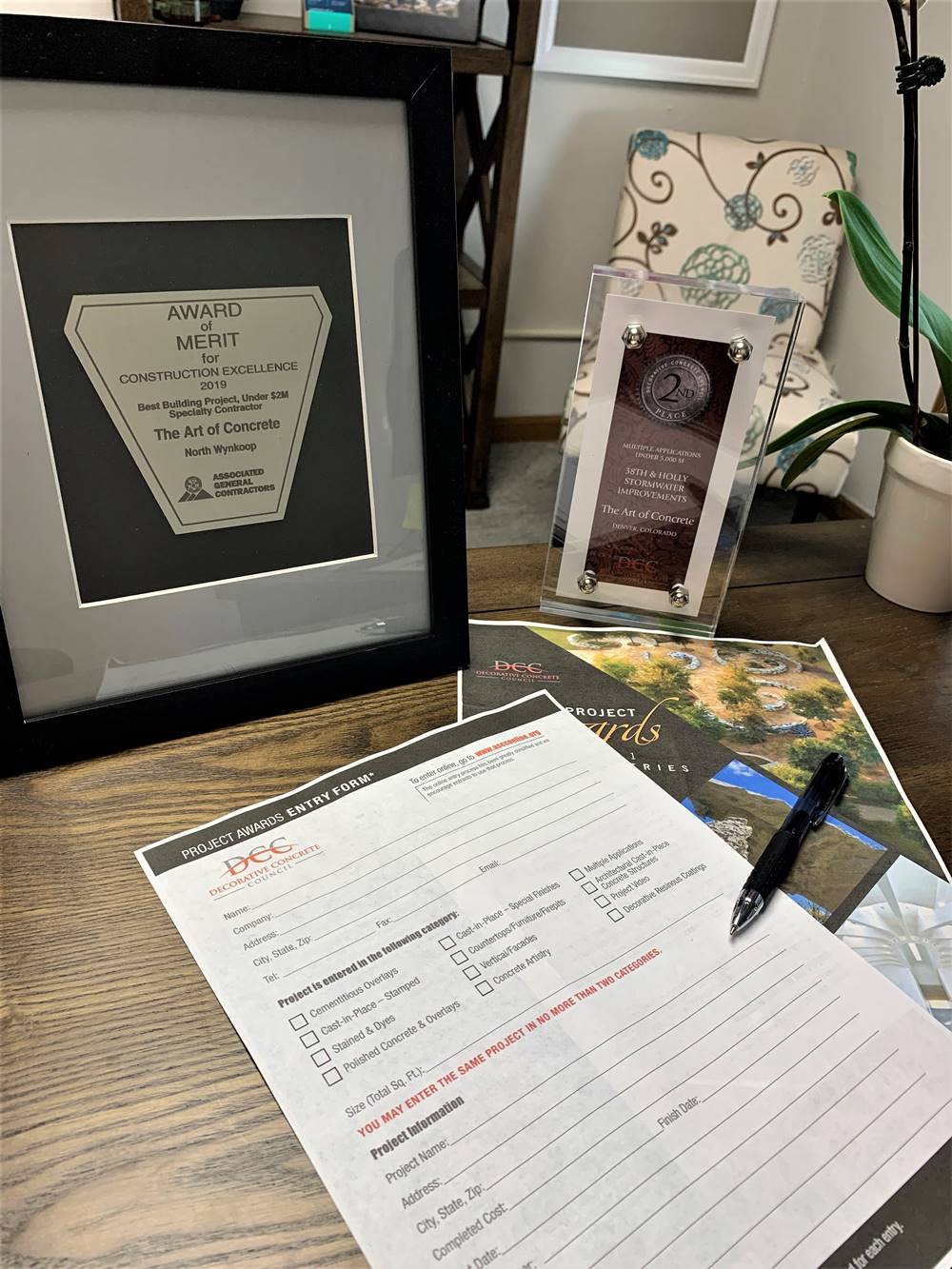In Part 1, we discussed why you should enter decorative concrete award competitions. Now that we’ve established a “why,” let’s look at how we should go about it.
First, identify your top awards programs you want to enter. Who is your audience and what types of projects are eligible? Once you narrow it down, carefully read each program’s entry rules and forms. All awards program’s criterion differs slightly and each group wants your information in a certain way.
Here are my top seven tips:
- Understand the scoring. Identify right away what criteria the judges use for selecting a winner.
- Know the judges. You may not personally “know” the judges but, if you can, try to know who they represent. For example, decorative concrete professionals judge the entries for the ASCC Decorative Concrete Council Awards. This means you address your peers. That’s good news — they most likely know and speak our language.
On the other hand, a panel of AGC members in another state judge the AGC awards I enter. This means they can be contractors, architects or other construction industry individuals not directly part of the decorative concrete industry. They don’t speak the same language as us.
Consequently, these judges may care less about how many different colors you used on a single project. However, they may be super-impressed by how many tons of rebar went into the project. Once you know your audience, you can tell your story properly.
- Take good photos. If needed, hire a professional. But at the bare minimum, take pictures that showcase your work at its best. Make sure the site is relatively clean. That means remove the empty pop cans or other trash before taking pictures. And take photos from different angles to help you tell the story.
- Be safe. If the awards program wants in-progress photos, make sure there are no safety violations in the photos. Your employees should wear proper PPE. Additionally, there should be no hazards in the photo (i.e., cap those rebar ends).
- Look at past winners. Some awards programs (like my local AGC Ace Awards) post full entries on the group’s website. This means you can read through past winners’ descriptions and look at photos to see what it takes to win.
Other awards programs just show the photos, which are valuable to review as well. Scroll through the past winners to help determine what the judges look for in winning projects.
- Pick the right category. That may seem like a no-brainer. However, read each category’s descriptions carefully and determine if your project best fits into that category.
One thing I do is read through each category. I then ask myself if I have any projects this year that fit that description. I go through them all with that mindset. Then I go back through that list and determine which ones have the strongest potential to stand out and win.
- Write your story. Most awards entries have some sort of description or narrative requirement. This is when you need to know your audience and know the judging criteria.
Typically, if the judges score on specific criteria, I use those as headings in my narrative to ensure I address them (i.e., Design, Safety, Challenges, etc.). I especially do this if they require a lengthy narrative. That way I know I have addressed them and the judges can quickly identify them.
In the past, I’ve sat on a panel of judges and had a score card to fill out. If I couldn’t find where an entrant talked about an item listed, they got a low score in that block. You want to make it easy for the judges to pinpoint why your project deserves to win.
Also in your story, use specific information. For example, don’t just say the project was over-budget and behind schedule and you came in and saved the day. Can you name one project out there that isn’t behind schedule and over-budget?
Give a specific example, such as: “We came in the project in the middle of blizzard season in Colorado. Consequently, we worked with the general contractor to problem-solve. Finally, we ended up building heated tents to preserve our quality and stay on schedule.”
Include impressive numbers. For one, AGC judges love their numbers. Whether it’s lineal feet of saw cuts, tons of rebar or cubic yards of concrete. If there’s something unusual about your project, be specific about it and impress your audience.
ASCC DCC awards deadline approaches
The deadline to enter the Decorative Concrete Council Awards is quickly approaching. You must enter by March 31, 2021, to reap the benefits of being an award-winning company.

















